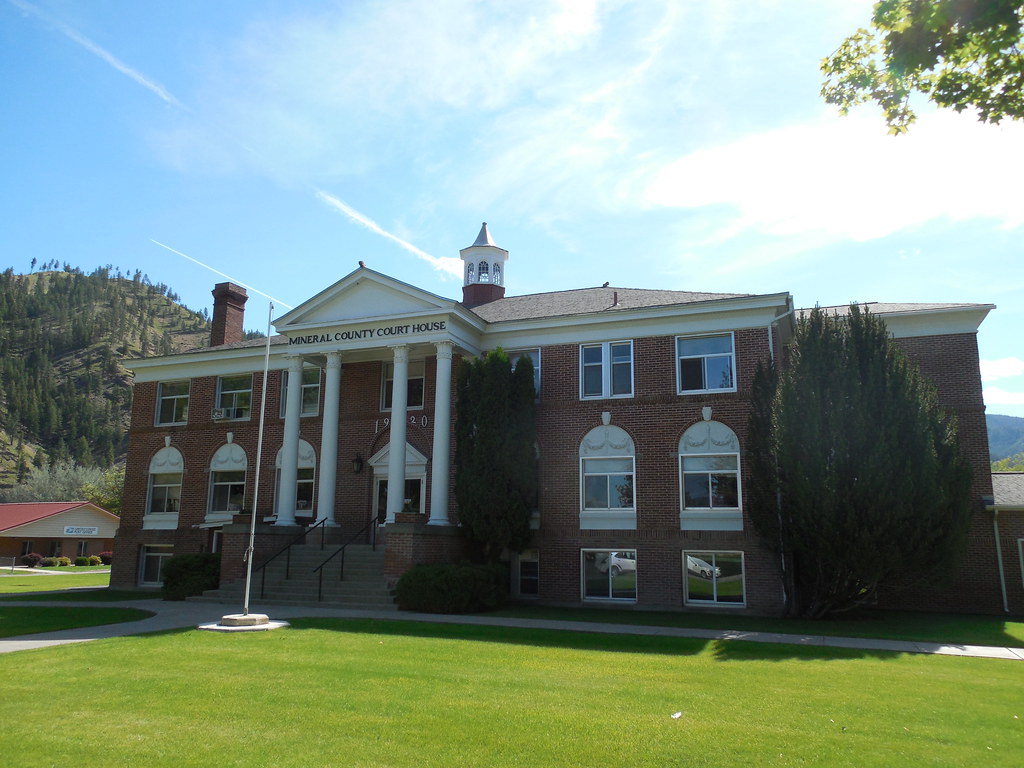A mine is a hole in the ground owned by a liar (attributed to Mark Twain).
I began some initial planning for a brief county counting trip to West Virginia that I hope to undertake in a couple of months. Examining potential routes, I noted a county called Mineral that I would hit in some of the likely scenarios. I’d crossed into Mineral before, as recently as last year, right across the north branch of the Potomac River from Cumberland, Maryland. But I never really gave it much thought at the time. Now I wondered, how did Mineral gets its name? What mineral came in such abundance to deserve its own county?
I also found three more Mineral Counties, a total of four. They all seemed interesting in their own ways.
Colorado

Many minerals came from the mountains surrounding Creede (map), the local seat of government in Mineral County, Colorado. Above all, silver put it on the map. Prospectors came to Colorado first for gold beginning in 1859 and then for silver a decade later. Colorado underwent a protracted Silver Boom during the last three decades of the 19th Century. Booms jumped from place to place, the final one happening in Creede in 1890.
“The town leapt from a population of 600 in 1889 to more than 10,000 people in December 1891. The Creede mines operated continuously from 1890 until 1985. Creede’s boom lasted until 1893, when the Silver Panic hit all of the silver mining towns in Colorado. The price of silver plummeted and most of the silver mines were closed. Creede never became a ghost town, although the boom was over and its population declined.”
Outlaws, crooks and nefarious characters inhabited Creede, a typical situation for these rough-and-tumble mining camps on the distant fringe. Jefferson Randolph “Soapy” Smith, the King of the Frontier Con Men, lived there during the peak of the boom. He died a few years later at the Shootout on Juneau Wharf in Skagway, Alaska.
Robert Ford also lived in Creede. Ford originally belonged to Jessie James’ criminal gang and reputedly killed James to collect a reward in 1882. He died in Creede in 1892, shot in the back by Edward O’Kelley.
O’Kelley came to be known as “the man who killed the man who killed Jesse James.” A policeman, Joe Burnett, shot and killed O’Kelley in Oklahoma City in 1904. That made Burnett “the man who killed the man who killed the man who killed Jesse James.” The chain stopped there. Burnett died of a stroke in 1917.
Montana

Mineral County, Montana felt so superior that it named the county seat Superior (map), although it may have actually been named for the founder’s hometown in Wisconsin. Gold became Mineral’s original namesake, triggered by a rush on nearby Cedar Creek in 1869. However silver also existed in abundance.
“The history of Mineral County is steeped in the tales of rich gold and silver mines. From the first mining efforts in the early 1860s to the present day, mining has been important to the people who first settled here and to those who now live in this county. Today, people still actively work mining claims, which are an important part of the county economy and heritage.”
Interestingly, neither gold nor silver made the greatest contribution to the history of Mineral County. That distinction went to sheets of paper in the form of the Bible’s printed word. Gideons International placed its very first Bible in the Superior Hotel in Superior, Montana. A Gideon named Archie Bailey stayed at the hotel regularly and sought permission to place a Bible in each of the hotel’s 25 rooms in 1908. Gideons followed that simple act with another 2 billion Bibles left in hotel rooms around the world for the next century and counting.
Nevada
Twelve Mile Circle featured a town in what later became Mineral County, Nevada, in Aurora: A County Seat in Two States. Simultaneously! I’ll summarize the situation briefly. Gold brought prospectors to the area in 1860. The border between California and Nevada left a lot to be desired and both states claimed the same strip because of its mineral wealth. A later, more definitive survey placed Aurora in Nevada although it didn’t matter in the long run because everyone abandoned Aurora when the gold ran out.
Mineral County survived because of its other important feature, a whole bunch of nothing. What better place for the Federal government to locate the largest ammunition depot in the world? It covered 147,000 acres (230 square miles; 600 square kilometres). Hawthorne Army Depot (map) grew around Mineral’s county seat at Hawthorne on three sides. It dated back to 1930 and continues to operate today, underpinning the entire economy of the county.
West Virginia

None of the other Mineral Counties rivaled the population of the one in West Virginia with its nearly 30,000 residents (map). Ironically, I found fewer stories about this one than any of the others. The mineral in question may have been iron ore or perhaps coal. Ironically, coal derives from organic material so it doesn’t actually meet the definition of a mineral.
Neither did I find any cool stories. Sure, George Washington owned some of the land, and some minor Civil War action took place there. The same could be said for nearly every other county within a couple hundred miles.

Leave a Reply